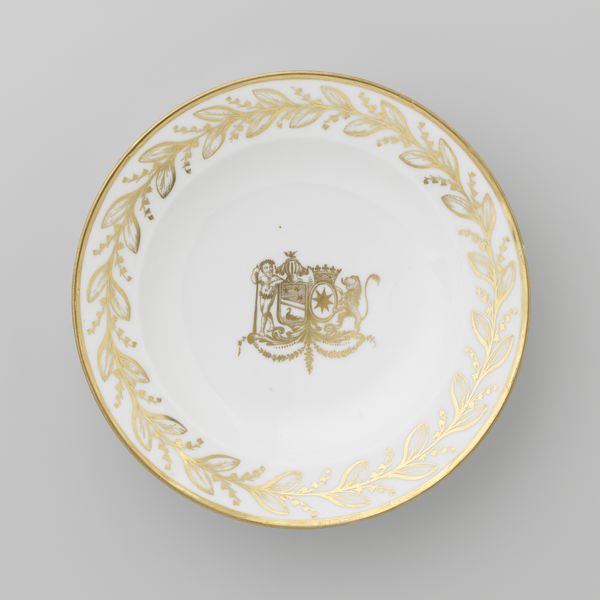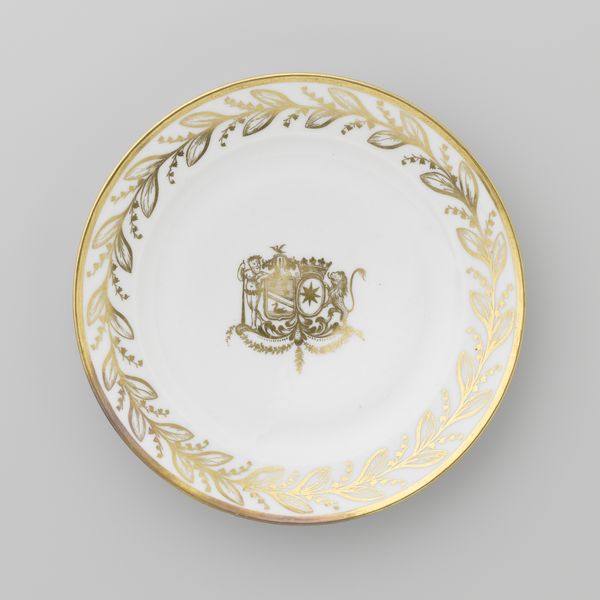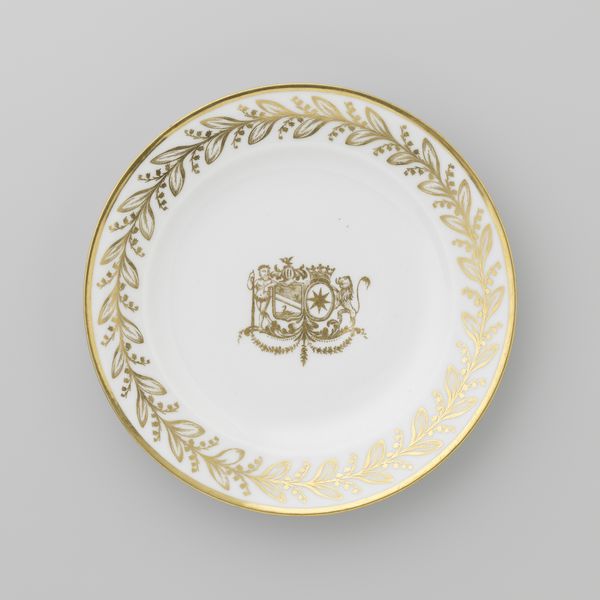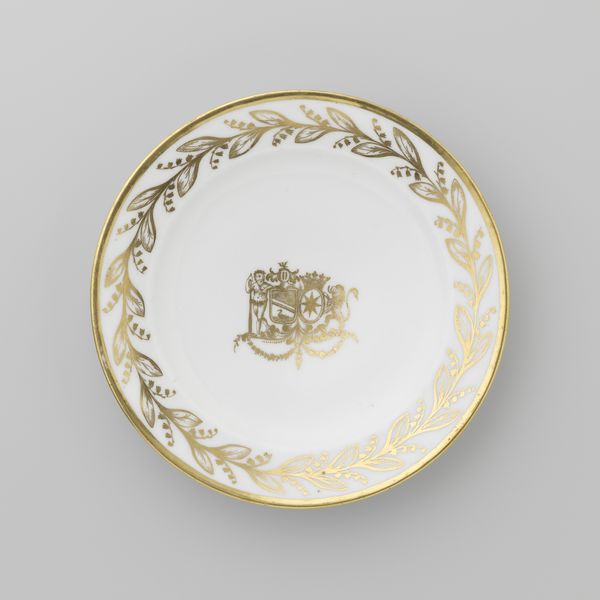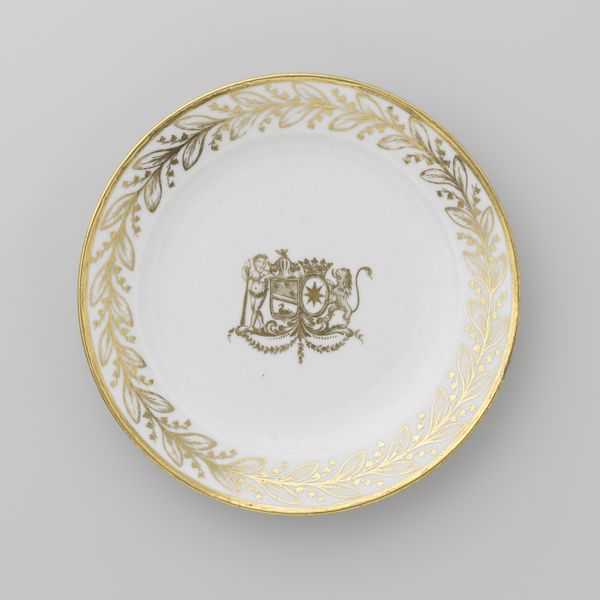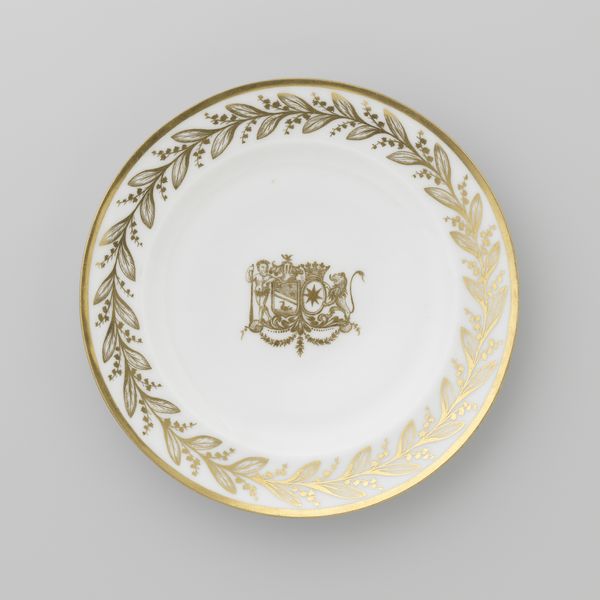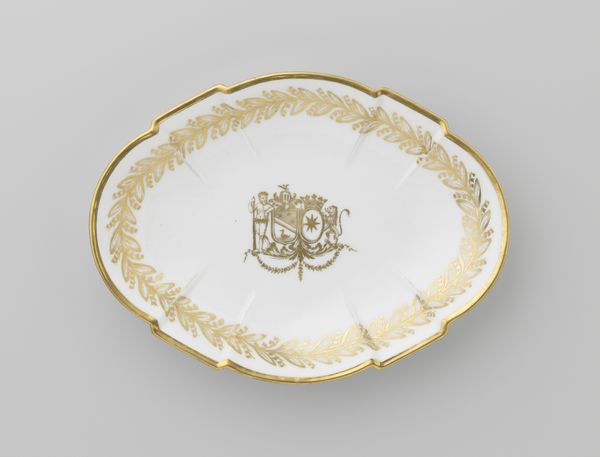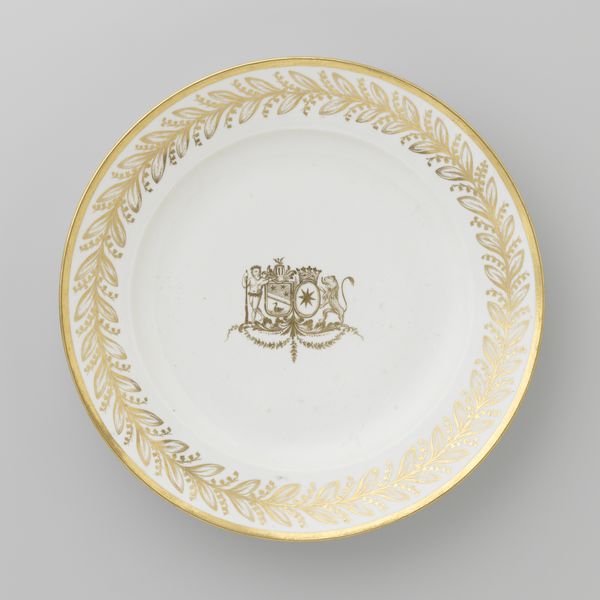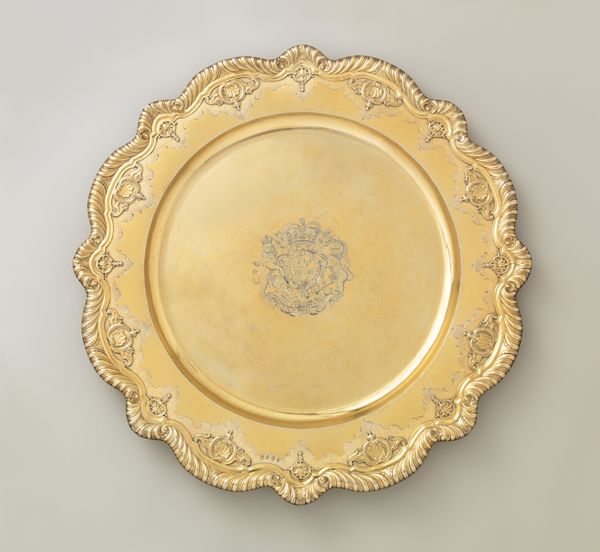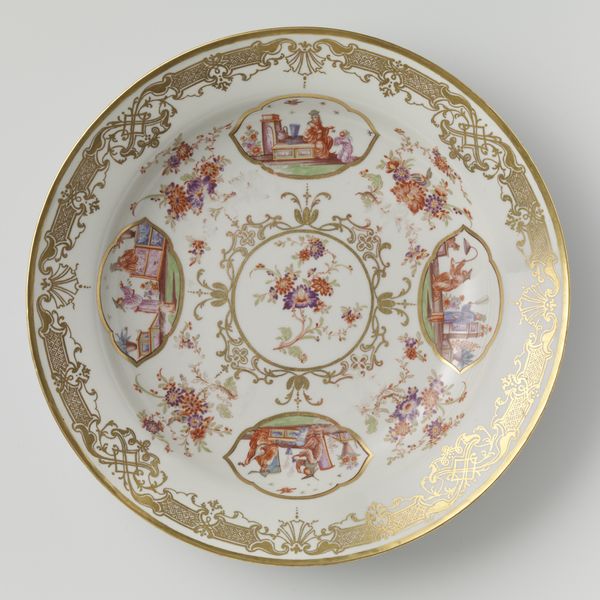
Plate with the coat of arms of Hendrik Peter Godfried Quack and Isabella Gertraud von Carnap c. 1790 - 1800
0:00
0:00
eblancheron
Rijksmuseum
ceramic, porcelain
#
neoclacissism
#
ceramic
#
porcelain
#
stoneware
#
decorative-art
Dimensions: height 4.5 cm, diameter 23.3 cm, diameter 13.2 cm
Copyright: Rijks Museum: Open Domain
Curator: Let's discuss this exquisite porcelain plate currently held at the Rijksmuseum, made sometime between 1790 and 1800. The object is titled "Plate with the coat of arms of Hendrik Peter Godfried Quack and Isabella Gertraud von Carnap". Editor: It feels so delicate. The thin gold lines tracing leaves around the edge contrast beautifully against the stark white porcelain. There’s almost a fragile elegance about it, hinting at the social rituals it might have been a part of. Curator: Absolutely. Decorative arts such as these weren't merely aesthetic. This piece served as a signifier of wealth, status, and familial lineage within the specific social milieu of the Dutch elite. It really makes you wonder about the cultural implications and the historical events influencing its existence. The central coat of arms makes me wonder about the Quack and von Carnap families, about class structures, marital alliances and their significance in shaping the political landscape. Editor: The act of commissioning such a piece reveals something, doesn’t it? An inherent desire to preserve and proclaim one's legacy, to root themselves within a historical narrative that extends beyond the individual. But the context, the role of institutions in preserving items such as this… does the story being presented to the public today reflect its intended significance at its time of creation? Curator: That’s always the question, isn’t it? Examining power structures allows us to rethink whose stories are amplified within spaces such as this museum and whose remain marginalized. Editor: Thinking about the materiality too... Porcelain in this period was still relatively rare, the gold even more so. I wonder how such items played a role in fostering national or even global trade networks at the time. Curator: Precisely, understanding the historical reception and function of art objects like this enriches our present-day interpretation. It requires questioning the visual culture it represents. Editor: And prompts us to consider the narratives we project onto these items today. Curator: Yes. It highlights both the art and the structures behind the artwork. Editor: This has deepened my appreciation not only of the plate, but also for understanding how we are connected with these histories.
Comments
No comments
Be the first to comment and join the conversation on the ultimate creative platform.
